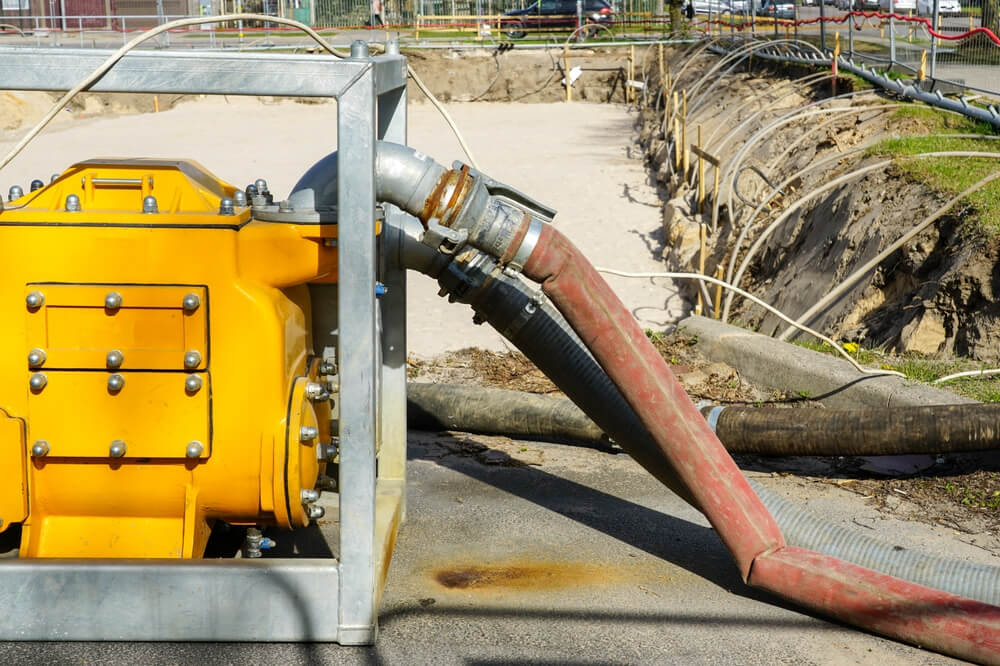Excess water during construction is the worst nightmare for contractors, and dewatering procedures are essential for preparing construction sites.
This manual will assist managers and planners of building sites in comprehending the fundamentals of dewatering, examining its advantages, and providing best practices and valuable hints on how to execute it quickly, efficiently, and economically.
What Is Dewatering?
Dewatering eliminates water from solid material or soil using wet classification, centrifugation, filtering, or other comparable solid-liquid separation techniques. This method is frequently employed in the construction sector to remove water from the soil, hardened concrete, or other materials to facilitate the reuse of construction materials. The appropriateness of the earth for construction purposes is another use for it.
The latter is a mixture of water and solids known as a “slurry,” which cannot be separated by filtering or centrifugation. The slurry typically contains a lot of water, so the pump is frequently used to move it.
Besides the building industry, dewatering in Edmonton is crucial in the mining and wastewater treatment sectors. Dewatering can be used to remove water from a structure that is being demolished after a period of heavy rain or flooding.
Why Does The Dewatering Matter?
Construction can be significantly hampered by wet soil at the foundation, especially in places with high water tables. Dewatering is a crucial component of any construction project since too much water might jeopardize the building’s structural integrity.
As water cannot take the sediments away from the ground, removing the water can aid in stabilizing the terrain. Dewatering also lessens the chance of sand contamination, upheaval failures, groundwater leaks, and basement floating. Groundwater Dewatering in Edmonton is crucial for worker and environmental safety as well as from a construction standpoint.
Benefits Of Dewatering
The following are the benefits of dewatering the soil.
1. Lower Impact On the Environment
Standing water has the potential to erode land over time. Additionally, debris and poisons from airborne contaminants can gather in standing water. Furthermore, stagnant water can serve as a haven for mosquitoes that spread deadly diseases like West Nile. Dewatering procedures used correctly enable job sites to eliminate contaminated water and its harmful components, reducing dangers, erosion, and damaging the environment.
2. Planning
You may maintain the timeline of your building project by including an efficient dewatering method. Construction sites may experience difficulties, such as floods from persistent rain and unpredictable storms—dewatering in Edmonton that works cuts down on needless delays.
3. Employee Safety
Dewatering in Edmonton may keep your staff members safe, content, and, most importantly, healthy. Standing water provides a variety of health problems to site management, crews, their families, and the local community since it frequently becomes contaminated. It also raises the possibility of workplace accidents brought on by slips and falls.
4. Stable Ground
Dewatering, a safe method of removing extra water, can help avoid dangers, including mudslides, shaky foundations, and equipment failure due to bogging. Additionally, this guarantees that your location is prepared for foundation preparation, excavation, and cement footing pours.
For assistance regarding dewatering in Edmonton, contact Taber Solids Control as they strive to be conscious of sustainability through their internal green business initiatives and activities.

